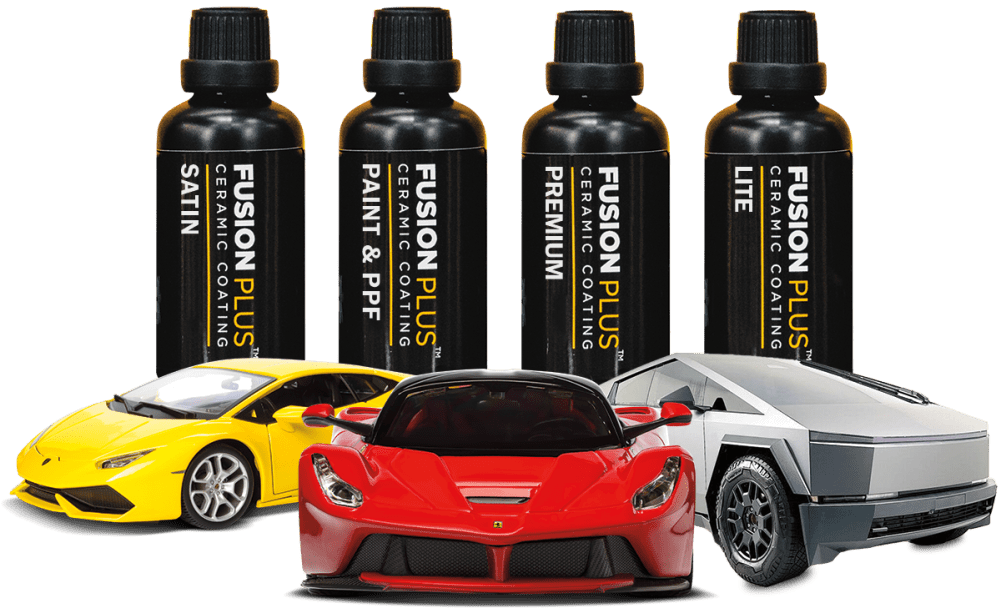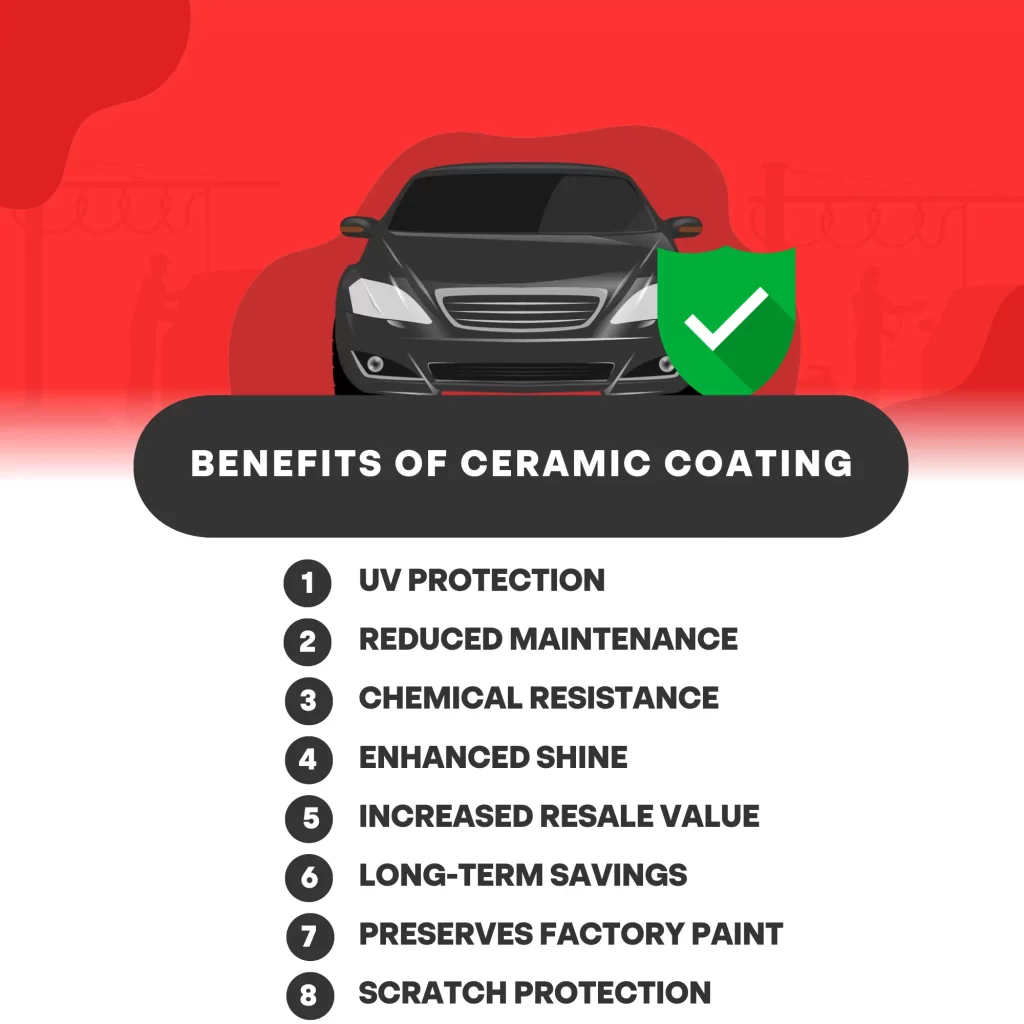How Ceramic Coating Enhances Your Vehicle's Protection and Appearance
How Ceramic Coating Enhances Your Vehicle's Protection and Appearance
Blog Article
Ceramic Finishing vs. Standard Wax: Which Gives Better Long-Term Protection?
The discussion between ceramic coverings and traditional wax for lorry security has garnered significant focus among automotive fanatics and professionals alike. Ceramic coatings flaunt exceptional long life and resistance to environmental variables, yet the complexity of their application elevates concerns concerning availability and practicality.
Introduction of Ceramic Finishing
Ceramic coating has actually gained considerable popularity amongst automotive lovers and detailers alike due to its sophisticated safety high qualities. This cutting-edge innovation is created to create a durable, hydrophobic guard over a vehicle's paint surface, significantly enhancing its resistance to environmental impurities such as dust, UV rays, and chemical discolorations. Unlike standard wax, which provides a short-term layer of defense, ceramic coatings bond at a molecular degree with the paint, using durable resilience-- typically extending past 2 years with proper maintenance.
The application procedure includes meticulous preparation of the automobile's surface area, including cleansing and brightening to ensure ideal bond. As soon as applied, the finishing treatments to develop a robust layer that not only adds depth and gloss to the paint but likewise streamlines upkeep. With its hydrophobic residential properties, ceramic layer enables water and dust to glide off even more quickly, minimizing the regularity of cleans and decreasing the threat of swirl marks.
Moreover, ceramic coverings are offered in different formulas, permitting users to select products customized to their certain demands and choices. Generally, ceramic layer represents a considerable advancement in paint defense modern technology, providing premium efficiency compared to conventional alternatives.
Overview of Traditional Wax
Traditionally considered a staple in automotive care, wax acts as a preferred choice for those seeking an uncomplicated approach to enhance and secure their vehicle's paint - ceramic coating. Automotive wax typically comprises natural active ingredients, such as carnauba, or synthetic compounds, made to produce a protective layer on the surface area of the paint. This layer not just boosts the automobile's gloss and radiate but additionally offers an obstacle versus environmental contaminants
The application of wax is usually user-friendly, making it accessible for both experts and do it yourself fanatics. It can be used by hand or maker, enabling versatility in the detailing process. As soon as used, wax requires a treating duration, after which it hardens to form a safety shell. Wax is likewise known for its capability to ward off water, promoting a beading effect that assists in the avoidance of water areas and corrosion.
Nevertheless, while wax is reliable for enhancing the visual charm of a lorry, it is very important to keep in mind that the protection it supplies may require extra frequent reapplication compared to different products, such as ceramic finishings. In general, standard wax remains a favored choice for those prioritizing ease of usage and immediate aesthetic improvement.
Sturdiness and Longevity Comparison
While both ceramic finishes and typical wax deal protective benefits for auto paint, their toughness and longevity differ considerably. Traditional wax, typically made from natural carnauba or artificial polymers, typically supplies a safety layer that lasts approximately 3 to 6 months. This relatively brief life-span requires routine reapplication to preserve ideal protection.
In comparison, ceramic coverings are crafted from sophisticated nanotechnology, creating a covalent bond with the paint surface. This results in a durable, hydrophobic layer that can withstand for two to five years, relying on the item and ecological conditions. The exceptional toughness of ceramic layers is associated to their chemical structure, which uses enhanced resistance to scratches, UV rays, and oxidation.

Defense Versus Ecological Factors
Securing an automobile's paint from ecological factors is critical for preserving its appearance and value over time. Vehicles are continuously exposed to a selection of components, including UV rays, bird droppings, tree sap, acid rain, and road grime, every one of which can jeopardize the honesty of the paintwork.
Ceramic layers give a durable defense against these environmental assailants. Unlike conventional wax, which can degrade rapidly under UV exposure, ceramic finishes develop a durable, hydrophobic layer that stands up to the dangerous impacts of sunlight and toxic wastes. This innovative technology creates a chemical bond with the car's surface, supplying remarkable defense that lasts for several years, also in extreme conditions.
In comparison, ceramic layers keep their safety high qualities longer, significantly decreasing the risk of paint damages and making sure that the car keeps its aesthetic appeal. As an outcome, ceramic finishes are significantly acknowledged as the superior selection for long-lasting protection versus ecological elements.
Application and Upkeep Differences
The methods of application and succeeding maintenance for ceramic finishes and standard wax differ significantly, affecting the total individual experience and effectiveness of each product. Ceramic finishes require a more complex application process, commonly including surface area prep work that includes cleaning, decontaminating, and brightening the lorry. Once the surface prepares, the ceramic covering is used in a controlled setting, commonly needing specialist knowledge to make sure proper curing and bonding to the paint.

While both products boost vehicle appearance, the longer-lasting protection provided by ceramic finishes may justify their initial investment, despite the more demanding application process. Conversely, conventional wax stays a preferred option for those looking for an easier, albeit short-term, service.

Conclusion
In conclusion, ceramic finishings demonstrate considerable advantages over conventional wax in terms of sturdiness and environmental management. With a life expectancy extending two to five years and premium resistance to UV rays, dust, and chemical discolorations, ceramic layers supply a much more efficient service for long-term vehicle maintenance. Although the application process might need expert knowledge, the resulting cost savings and lowered regularity of reapplication highlight the value of ceramic coatings for those looking for ideal car protection.
The dispute between ceramic coatings and standard wax for car defense Click Here has amassed considerable attention amongst automotive fanatics and professionals alike. Unlike typical wax, which offers a temporary layer of security, ceramic coatings bond at a molecular degree with the paint, using durable sturdiness-- often expanding beyond two years with correct maintenance.
While both ceramic finishes and conventional wax offer protective advantages for vehicle paint, their durability and long life differ dramatically. For automobile fanatics seeking long-lasting defense, ceramic coverings provide an engaging advantage over conventional wax items.
In verdict, ceramic coverings show substantial advantages over conventional wax in terms of toughness and ecological protection.
Report this page